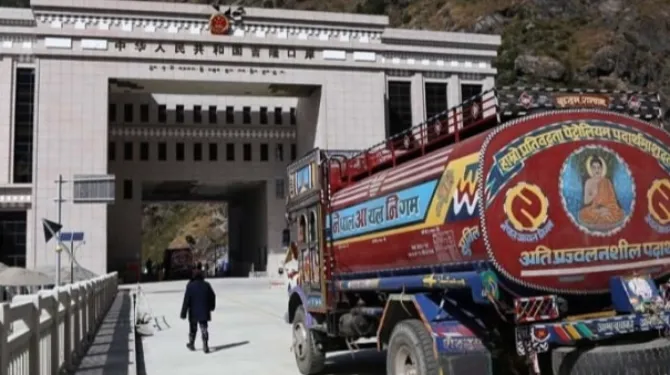-
CENTRES
Progammes & Centres
Location
The inclusion of soft power initiatives under the BRI shows the urgency on the Chinese side to project the wheels of BRI as moving in Nepal

The Communist Party of China’s (CPC) International Development Liaison Office launched the Silk Roadster platform in Nepal in July. Marking 10 years since the inception of the Belt and Road Initiative (BRI), ‘the new concept’ as per Beijing is meant to expand the scope of the BRI in Kathmandu and further strengthen political and people-to-people relations in Nepal. The past few months saw bilateral relations between Nepal and China being affected by developments related to the BRI and the projects that fall under its ambit. While China has attempted to co-opt projects signed before Kathmandu joined the BRI as being under the initiative, the Nepali side has been careful to allow such a wide attribution. This was visible in the question of hard infrastructure with the controversy surrounding the Pokhara international airport and China’s unilateral announcement of it being a flagship project under the BRI. Consequently, proclaiming predominantly people-to-people cooperation and exchanges as a new platform under the BRI confirms the importance that Beijing has anointed on showing some progress under the BRI in the land-locked country. The platform aims to build upon the pre-existing cultural and people-to-people relations between both sides to increase China’s influence.
While China has attempted to co-opt projects signed before Kathmandu joined the BRI as being under the initiative, the Nepali side has been careful to allow such a wide attribution.
Aimed at utilising resources from “...local governments, universities, enterprises and institutions in China”, the platform was launched in Bhaktapur with representatives from eight Nepali political parties and several Chinese vocational institutions and enterprises in attendance. It has five project areas—the Silk Road Embarkment, the Silk Road Enjoyment, the Silk Road Enhancement, the Silk Road Enlightenment and the Silk Road Empowerment. These include proposals to impart technical skills to young populations, conduct short-term educational and cultural exchanges, increase cooperation between enterprises on both sides, hold cultural exhibitions and inform the other side on Chinese culture and Xi Jinping thought, and provide certain small services like free medical check-ups, repair of electrical appliances, etc. As per the concept paper ‘Introduction of Silk Roadster and Its Five Signature Projects’, which was seen by many news portals, China introduced the platform in response to requests from many South and Southeast Asian countries, who had expressed a desire to have more practical cooperation with Beijing. This, Beijing suggests, is possible through inter-party exchanges and organisations like the Friends of Silk Road Clubs, which will hitherto facilitate the activities mentioned under the programme. These local level exchanges will improve both party-to-party and state-to-state dynamics and present Kathmandu with learnings from China’s development. But while China has attempted to place this initiative as a new component of the BRI, most of its elements, vis-a-vis people-to-people ties and the exchanges between political parties have always been a part of the bilateral relationship.
In June 2023, a Chinese team landed at the Pokhara international airport to attend the Nepal-China Friendship Dragon Boat Race Festival. While the Nepali leaders focused primarily on the event’s ability in boosting the flow of tourists to the country, China advertised the race as an example of bilateral public diplomacy under BRI. This incorporation of even soft power initiatives under the ambit of the BRI, similar to the case of the hard infrastructure projects like the Pokhara international airport is also a desperate scramble to show that the BRI is progressing in the country amidst the difficulties that the big ticket projects are still facing.
A Chinese team landed at the Pokhara international airport to attend the Nepal-China Friendship Dragon Boat Race Festival.
Prime Minister Prachanda is expected to pay a three-day visit to Beijing in September where he will meet the Chinese President, Xi Jinping, apart from the Premier, Li Qiang. While the itinerary of the trip is still developing, there are reports about the PM intending to request a write off on the loan for the Pokhara airport along with other loans taken as far back as 2012. His focus will also be on urging the Chinese side to issue more grants-based projects. He is also planning to request a grant for a ‘signature project’ with the country’s ambassador to China urging Beijing to fund big projects through grants. During the then PM Oli’s leadership in June 2019, Kathmandu had identified a total of 35 projects for funding under BRI—on infrastructure, energy, connectivity, trade and commerce—which were brought down to nine, probably on the insistence of the Chinese side and because of Nepal’s preference for grant-based projects. But four years later, none of the nine projects have materialised. In January 2023, a team from China reached Nepal to conduct a feasibility study for the Kathmandu-Kerung railway, one of the nine projects under the BRI, but no project has reached the construction stage, with even a framework for project implementation not in shape. Back then, some officials blamed the lack of an institutional capacity in Nepal for the delay in project implementation. The current Nepali ambassador however refutes that claim, blaming Beijing for not prioritising Nepali projects because of which there is still no clarity on how much both sides will invest. The MoU signed between the two sides has no clarification on the financial modalities of the project, which brings up the debate about grants and loans. These concerns were brought up during Wang Yi’s visit to the country in March 2022. This reticence on the Nepali side towards taking more loans and the fear of having more white elephant projects could have necessitated the renewed focus on soft power diplomacy from China.
The current Nepali ambassador however refutes that claim, blaming Beijing for not prioritising Nepali projects because of which there is still no clarity on how much both sides will invest.
The underlying focus of the Silk Roadster platform is the development of relations between people and political parties in both countries. During the launch, the Chinese side expressed their willingness to provide ‘short-term training opportunities’ in China for foreign political parties to enable them to learn more about China. The China-Nepal bilateral relationship has always given importance to political interests. Maintaining relations between the political parties in Nepal has been a foreign policy tool that Beijing has employed very often. While this could be a factor of the affinity between the Communist Party of China and the communist parties in Nepal, even the non-communist parties have seen the benefit in interacting at a party level with China on some occasions. Beijing has been conducting political party training programmes in countries in Africa as far back as 2016 and organised the world political parties dialogue in 2017 with various parties worldwide. This dialogue was organised by the same department that launched the silk roadster platform. When the two communist parties of Nepal merged in 2017, they also signed a party level six-point bilateral agreement with the CPC. Back then, this agreement allowed 200 Nepal Communist Party (NCP) members to attend a workshop on Xi Jinping thought and envisaged more exchanges with the CPC—high level visits, ideological trainings, etc. CPC’s earlier programmes have also focused on building capacity, lectures on Chinese culture, field trips to local governments, etc all of which are elements of the new platform. The workshops received criticism with fears that China will be able to interfere in the decision-making process and tamper with the country’s sovereignty.
The reiteration of all these initiatives again under a new programme shows the urgency on the Chinese side to project the wheels of BRI as moving in Nepal.
Beijing also views the provision of scholarships to Nepali students, and/or foreign students in general as a two-way investment. It allows the inclusion of young people in their workforce at least in the short and medium term and when they return to their home country, a Chinese education enables them to advocate for the Chinese culture and mode of learning, in turn expanding China’s influence in their respective countries. As a very high number of Nepali students rely on Chinese scholarships, this trend will continue for some time. Between 2004-2016, the number of foreign students in China from BRI countries expanded eightfold. In 2012, before the launch of the BRI, from countries under the BRI, less than 53 percent received Chinese government scholarships. By 2016, the number had reached 61 percent. Scholarships for BRI countries are marketed as Silk Road programmes. Since Nepal became a signatory to the BRI, China has increased the number of scholarships it gives to Nepali students, with around 6400 Nepali students in the country in 2018. The reiteration of all these initiatives again under a new programme shows the urgency on the Chinese side to project the wheels of BRI as moving in Nepal. A recent survey of public opinion in Nepal on the competition between India and China showed an overall sense of affinity with India based on religious, cultural and familial ties with 70 percent of the respondents considering India as the more visible country in Kathmandu. Of those who considered China as more visible (26 percent), the presence of the big infrastructure projects in the capital were the most visible marker. The inclusion of these soft power elements under the BRI reflects Beijing’s efforts to further expand the political and people-to-people relations between the two sides, increase its influence inside Kathmandu, and also redefine how BRI and projects related to it are visualised in the country. While China has relied on elite capturing in the country, as in the case of other smaller countries like Sri Lanka, the trajectory that the latter subsequently followed has also cautioned it against placing all its bet on big projects. This caution is evident in this new initiative. Whether this helps move the wheels of BRI in the country will be seen in the following months.
Shivam Shekhawat is a Research Assistant with the Observer Research Foundation
The views expressed above belong to the author(s). ORF research and analyses now available on Telegram! Click here to access our curated content — blogs, longforms and interviews.

Shivam Shekhawat is a Junior Fellow with ORF’s Strategic Studies Programme. Her research focuses primarily on India’s neighbourhood- particularly tracking the security, political and economic ...
Read More +